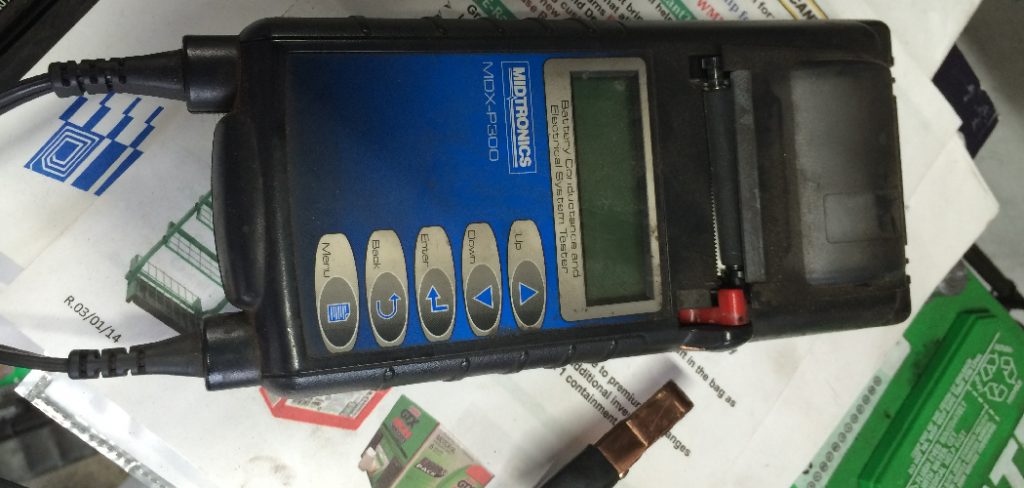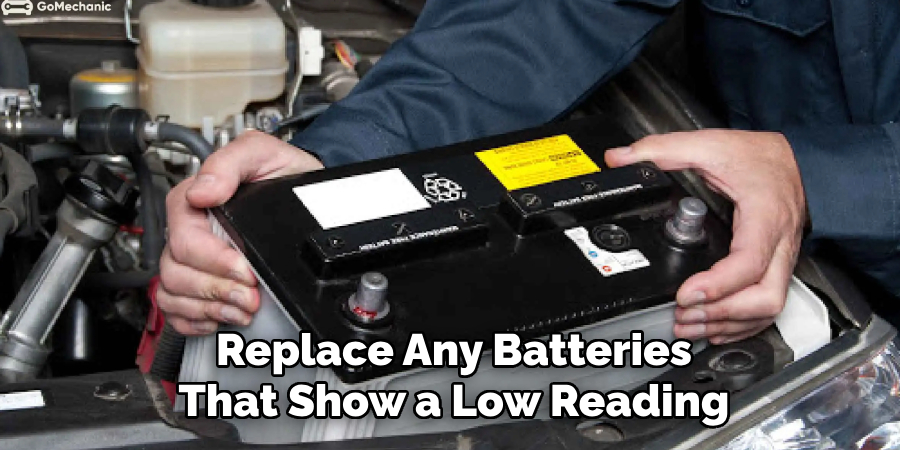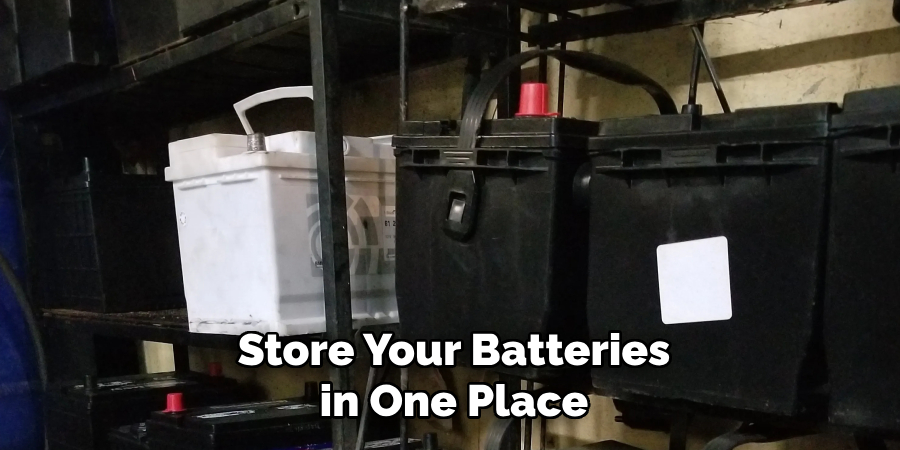Have you ever experienced the frustration of a dead battery in your important devices? Whether it’s your remote control, flashlight, or even car battery, having a dead or dying battery can be incredibly inconvenient. But fear not, for we have a solution that will make your life easier and save you money in the long run – using a battery tester.

In this blog post, we’ll dive into everything you need to know about how to use a battery tester. From its benefits to step-by-step instructions on how to use one properly, this guide has got you covered. So sit tight and get ready to become an expert at prolonging the life of your batteries with our ultimate how-to-guide on using a battery tester.
Why May You Want to Use a Battery Tester?
1 . To Save Money
One of the main reasons to use a battery tester is to save money. This device allows you to accurately test the strength and remaining life of your batteries, so you can avoid throwing away perfectly good ones. This way, you won’t have to keep buying new batteries every time one dies on you.
2 . To Prevent Wasting Time
Another reason to use a battery tester is to save time. We’ve all been there – frantically searching for new batteries when the remote control suddenly stops working. With a battery tester, you can quickly test your batteries and determine whether they need to be replaced or not, saving you time and hassle.
3 . To Be Environmentally Friendly
In addition to saving money and time, using a battery tester is also environmentally friendly. By avoiding unnecessary disposal of batteries, you’re reducing your contribution to e-waste and helping the environment.
4 . To Ensure Accuracy

Using a battery tester ensures accuracy in determining the strength and remaining life of your batteries. This is especially important when using rechargeable batteries, as overcharging them can cause damage and reduce their lifespan.
How to Use a Battery Tester in 6 Easy Steps
Now that we’ve covered why you may want to use a battery tester, let’s dive into how to use one properly. Follow these simple steps for accurate results:
Step 1: Gather Your Supplies
The first step is to gather all the necessary supplies. You will need a battery tester, batteries to be tested, and a pen and paper to record your results. Also, make sure your battery tester is compatible with the type of batteries you want to test.
Step 2: Insert the Battery
Take one battery and place it in the designated slot on your battery tester. Make sure to match the positive and negative ends of the battery with the corresponding symbols on the tester. This will ensure accurate results.
Step 3: Wait for the Reading
Once the battery is inserted, wait for a few seconds for the reading to appear on the tester’s display. The reading will show you the strength of your battery and how much life it has remaining. Also, pay attention to any warning signs that may indicate a faulty or damaged battery.
Step 4: Record the Results
Take note of the reading on your tester and write it down on your paper. This will help you keep track of which batteries need to be replaced and when. You can also use this information to compare the performance of different brands of batteries.
Step 5: Repeat for Each Battery

Repeat steps 2-4 for each battery you want to test. Make sure to replace any batteries that show a low reading or warning signs.
Step 6: Store Your Batteries Properly
After testing all your batteries, make sure to store them properly according to their condition. For example, if a battery is running low, you can store it separately from fully charged batteries. This will help you easily identify which ones need to be replaced when needed.
Extra Tips to Use a Battery Tester
1 . Do Not Test Hot or Cold Batteries
For accurate results, make sure your batteries are at room temperature when testing them. Hot or cold batteries may give false readings. Also, never test batteries immediately after using them as they may still be warm and affect the results.
2 . Test Both New and Old Batteries
Make sure to test both new and old batteries periodically. This will give you an idea of how long your batteries last and help you determine when it’s time to replace them. Also, testing new batteries ensures they are not faulty before use.
3 . Test Batteries Before Important Events
If you have an important event coming up where you’ll be using batteries extensively, it’s always a good idea to test them beforehand. This will help prevent any unexpected battery failures during the event.
4 . Use a Battery Organizer

A battery organizer can help you keep track of which batteries are fully charged and which ones need to be replaced. It’s also a great way to store your batteries in one place for easy access.
5 . Clean Your Battery Tester Regularly
To ensure accurate results, make sure to clean your battery tester regularly. Dust and debris can affect the readings, so use a soft cloth to wipe it down before and after each use.
6 . Test Batteries with Different Devices
If you’re unsure about the accuracy of your battery tester, try testing the same batteries with a different device. This will help you determine if the issue is with the batteries or the tester itself.
7 . Replace Batteries in Pairs
When using devices that require two or more batteries, it’s best to replace them in pairs. This ensures equal strength and life in the batteries, preventing any potential damage to your device.
8 . Use a Battery Tester with Different Battery Types
If you use various types of batteries, invest in a battery tester that can test them all. This will save you the hassle of having multiple testers for different battery types.
9 . Test Batteries Before Storing Them
If you plan on storing batteries for a long period, make sure to test them beforehand. This will help prevent any surprises when you finally need to use them.
10 . Dispose of Old Batteries Properly

Lastly, make sure to dispose of old or damaged batteries properly. Most cities have designated e-waste disposal facilities that can handle batteries safely. This will help protect the environment and prevent any potential hazards.
Frequently Asked Questions
What Precautions Should I Take When Using a Battery Tester?
When using a battery tester, make sure to handle both the device and batteries carefully. Avoid touching any metal parts of the batteries while testing them, as this could cause an electric shock. Also, keep away from water or any conductive materials.
How Often Should I Test My Batteries?
It’s best to test your batteries periodically, especially before important events or when using them extensively. This will help you determine their lifespan and prevent any unexpected failures.
Can I Test Different Battery Types with the Same Tester?
Yes, there are battery testers that can test various types of batteries. Make sure to check the compatibility of your tester before purchasing it. Also, follow the instructions provided by the manufacturer for accurate results.
Can I Test Rechargeable Batteries?
Yes, rechargeable batteries can also be tested with a battery tester. Make sure to fully charge the batteries before testing them for accurate results. Also, keep in mind that the reading may vary depending on the age and condition of the batteries.
Can I Use a Battery Tester for Non-Alkaline Batteries?
Yes, most battery testers can test both alkaline and non-alkaline batteries. However, make sure to check the compatibility before using it with non-alkaline batteries as they may have different voltage levels.
How Long Will a Battery Tester Last?
The lifespan of a battery tester depends on its quality, usage, and maintenance. With proper care and occasional cleaning, it can last for several years. Make sure to replace it if you notice any signs of malfunction or inaccuracy. So these were some extra tips to help you use a battery tester efficiently.
Follow these guidelines for a longer lifespan of your batteries and to prevent any unexpected failures. Remember, a battery tester is an essential tool for every household, so make sure to have one on hand and use it regularly for optimal performance of your devices. Happy testing!
Conclusion
Now you know how to use a battery tester and the benefits of doing so. By following these simple steps and tips, you can save money, time, and help the environment while ensuring your devices have a steady supply of power. Don’t forget to periodically test your batteries for optimal performance! So, always remember to use a battery tester before replacing your batteries to get the most out of them. Happy testing!

Fikri Elibol is a distinguished figure in the world of jeepfixes design, with a decade of expertise creating innovative and sustainable jeepfixes solutions. His professional focus lies in merging traditional craftsmanship with modern manufacturing techniques, fostering designs that are both practical and environmentally conscious. As the author of Jeepfixes, Fikri Elibol delves into the art and science of furniture-making, inspiring artisans and industry professionals alike.
Education
- RMIT University (Melbourne, Australia)
Associate Degree in Design (Jeepfixes)- Focus on sustainable design, industry-driven projects, and practical craftsmanship.
- Gained hands-on experience with traditional and digital manufacturing tools, such as CAD and CNC software.
- Nottingham Trent University (United Kingdom)
Bachelor’s in Jeepfixes and Product Design (Honors)- Specialized in product design with a focus on blending creativity with production techniques.
- Participated in industry projects, working with companies like John Lewis and Vitsoe to gain real-world insights.
Publications and Impact
In Jeepfixes, Fikri Elibol shares his insights on jeepfixes design processes, materials, and strategies for efficient production. His writing bridges the gap between artisan knowledge and modern industry needs, making it a must-read for both budding designers and seasoned professionals.
